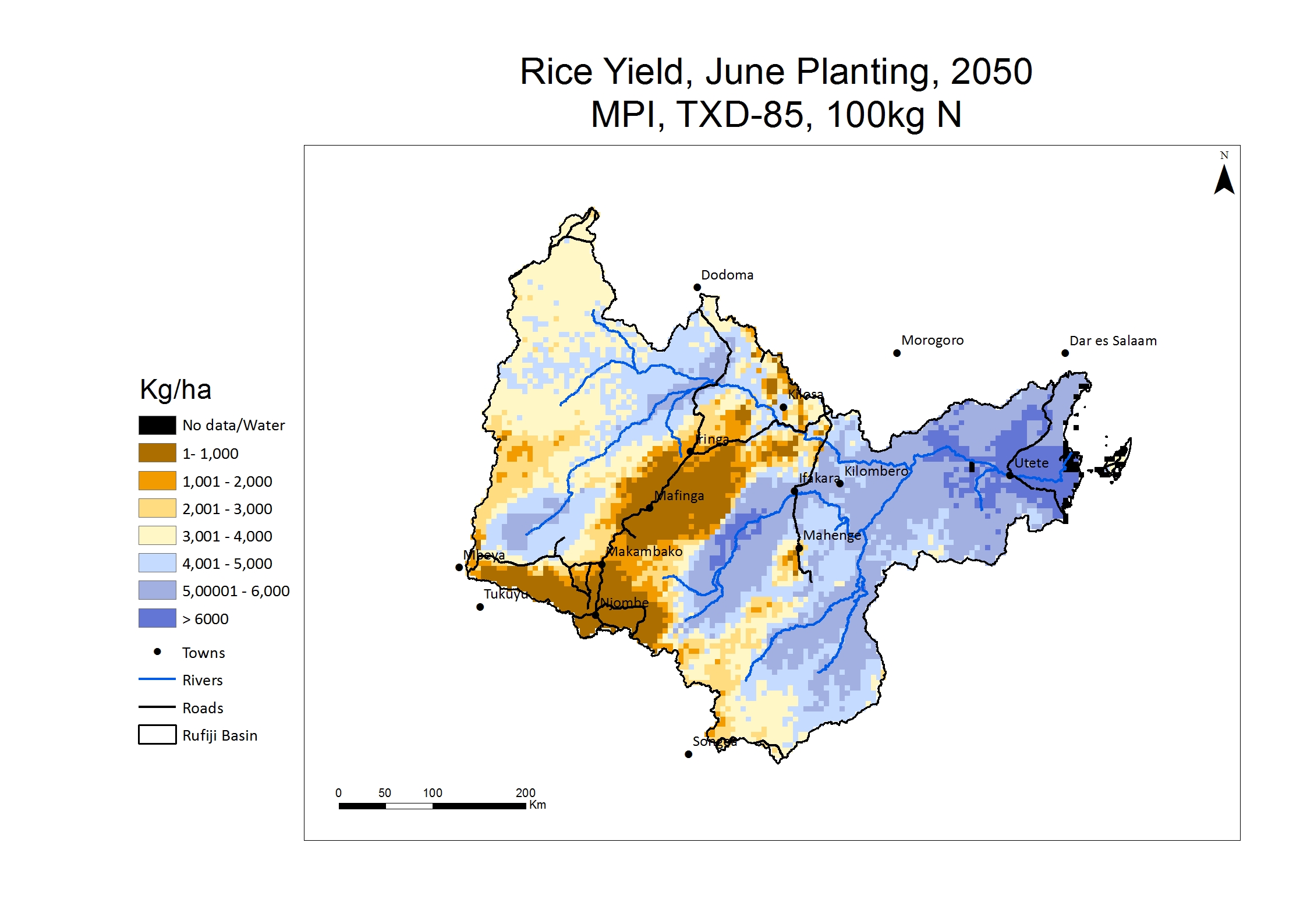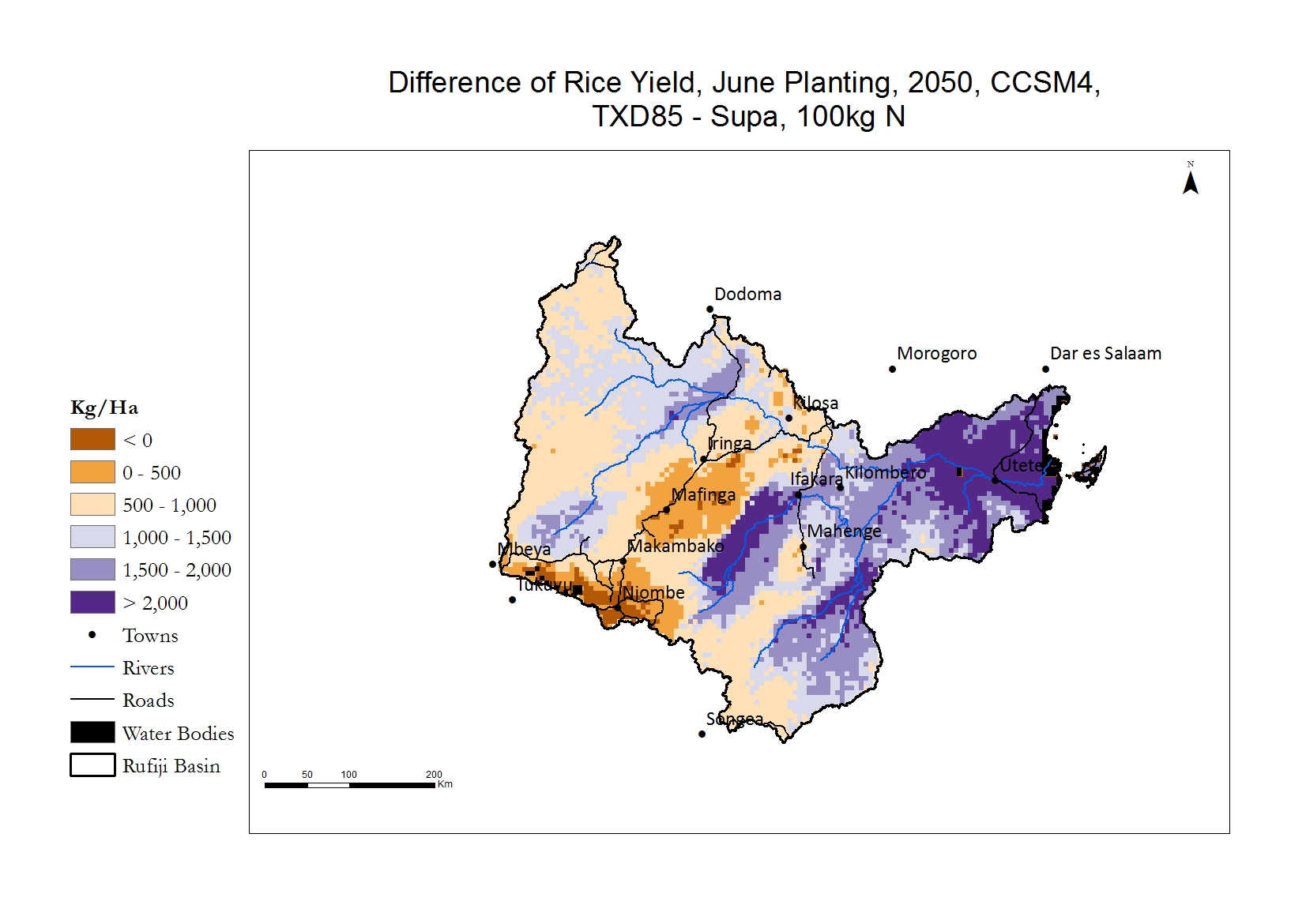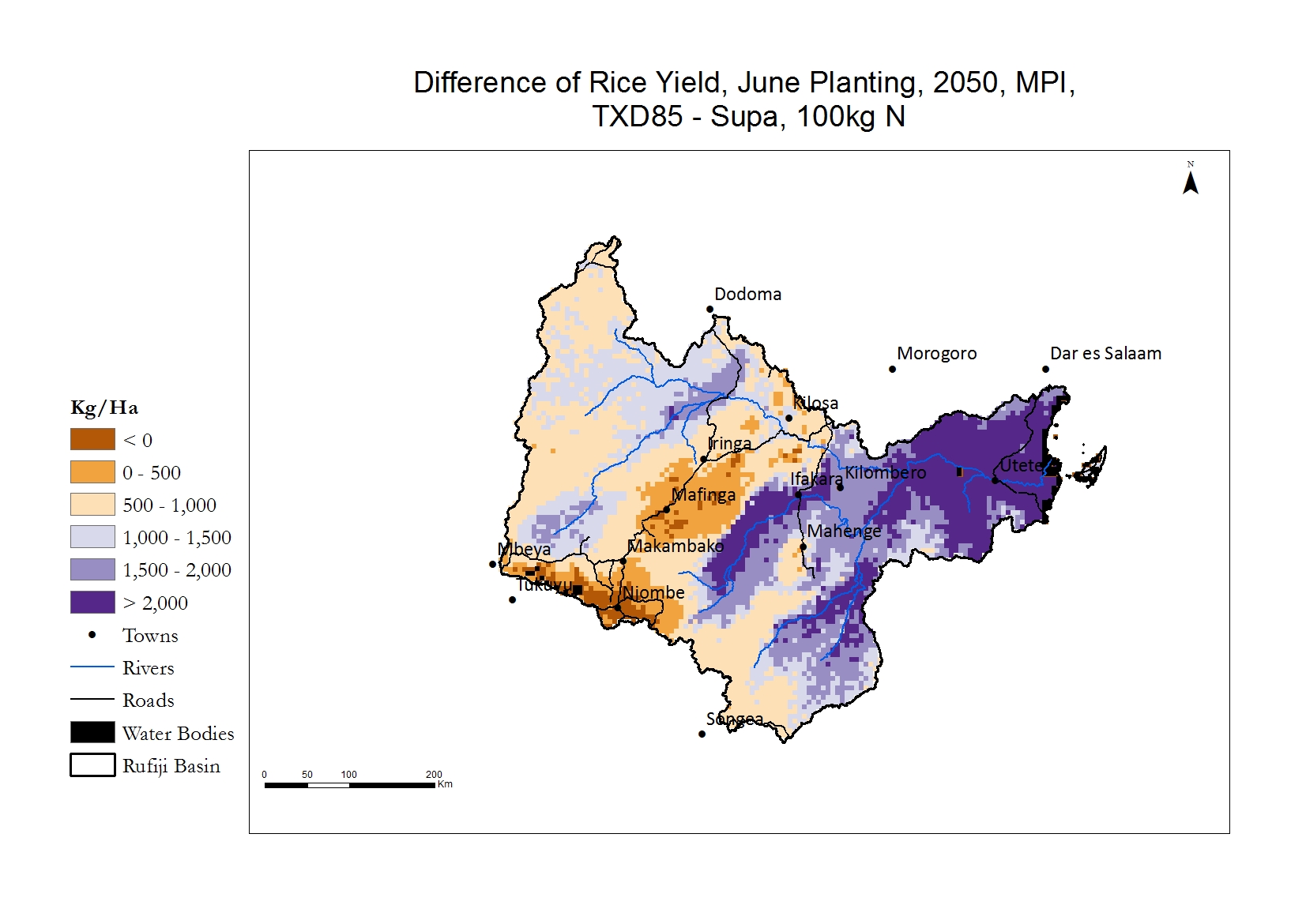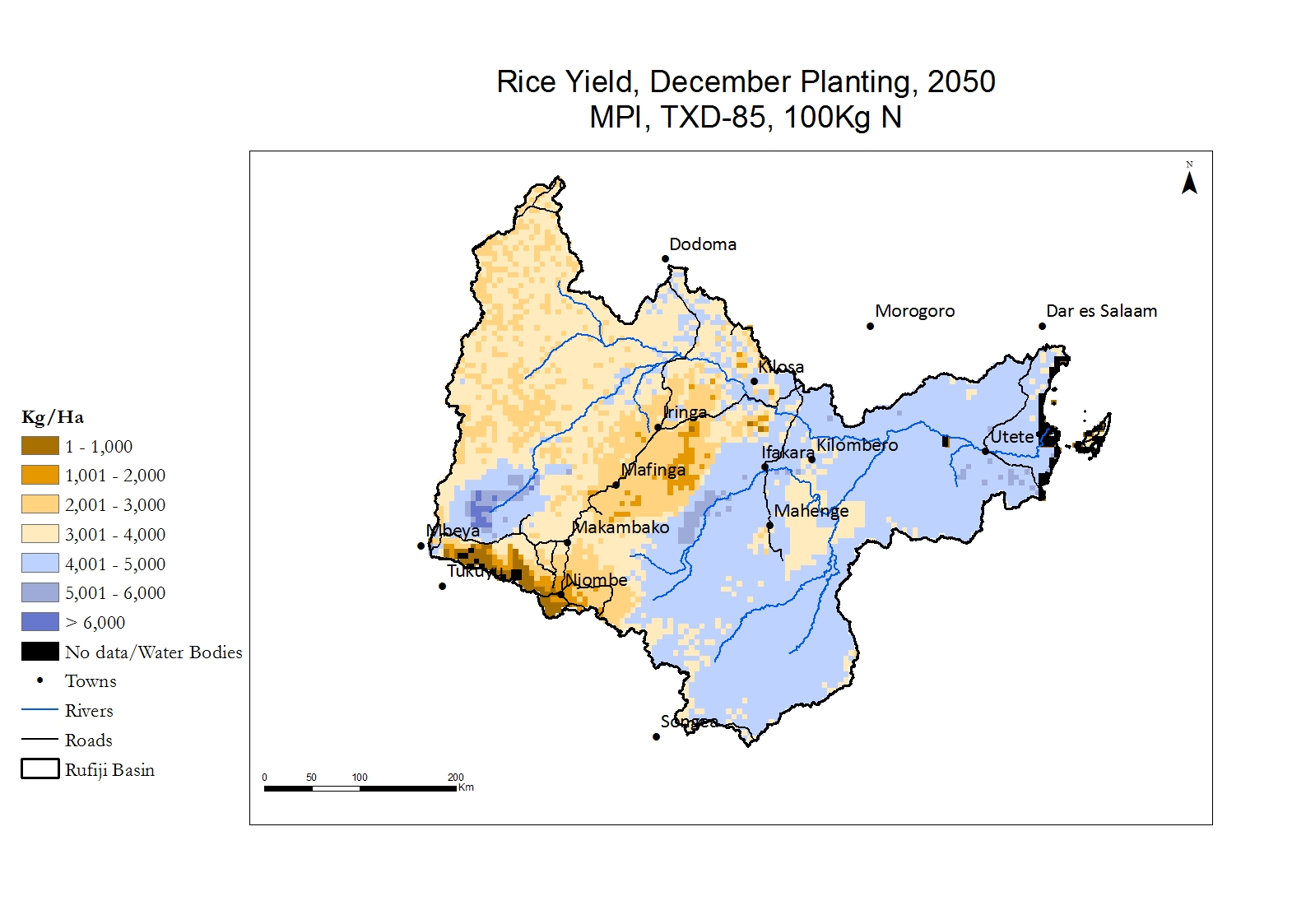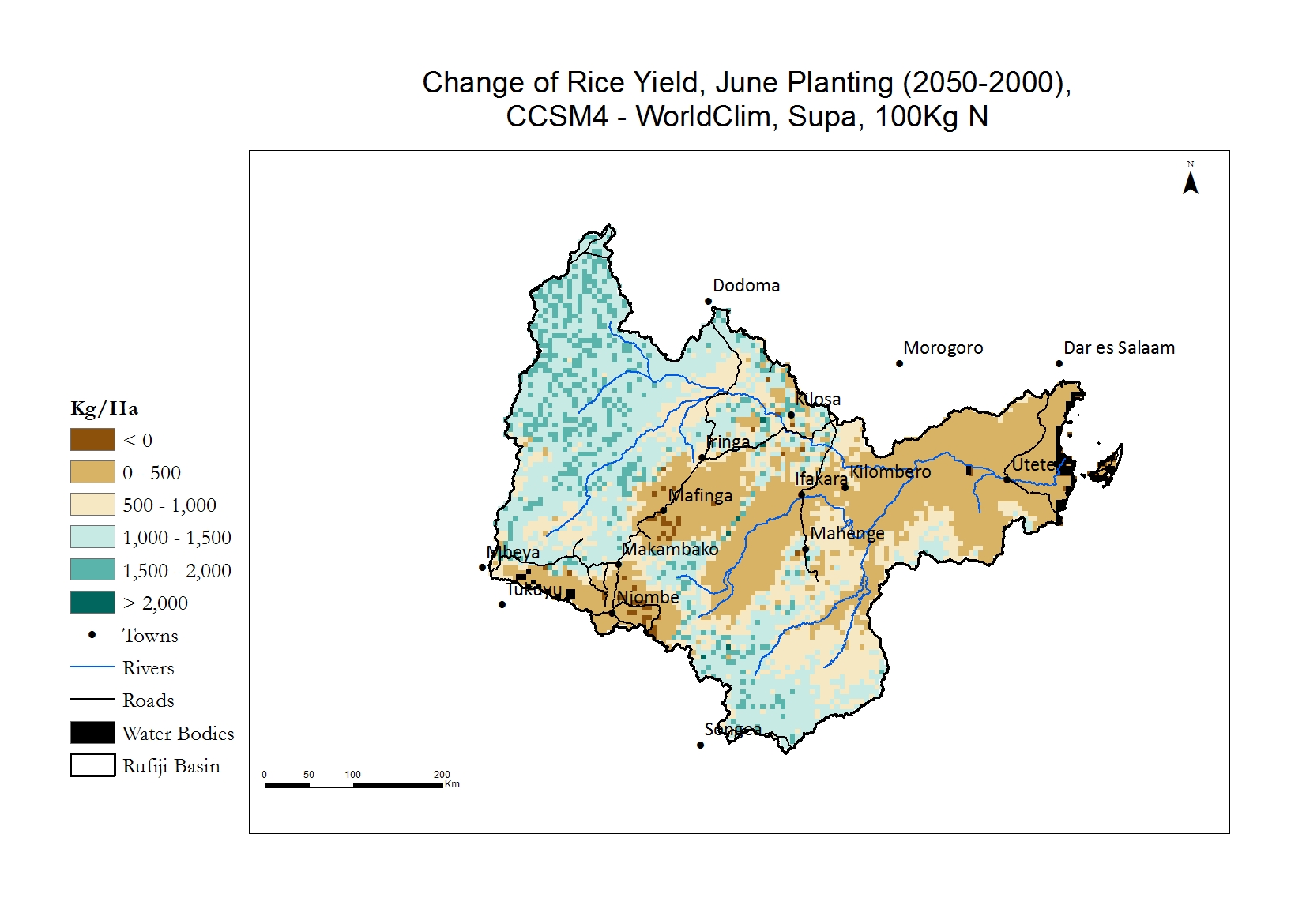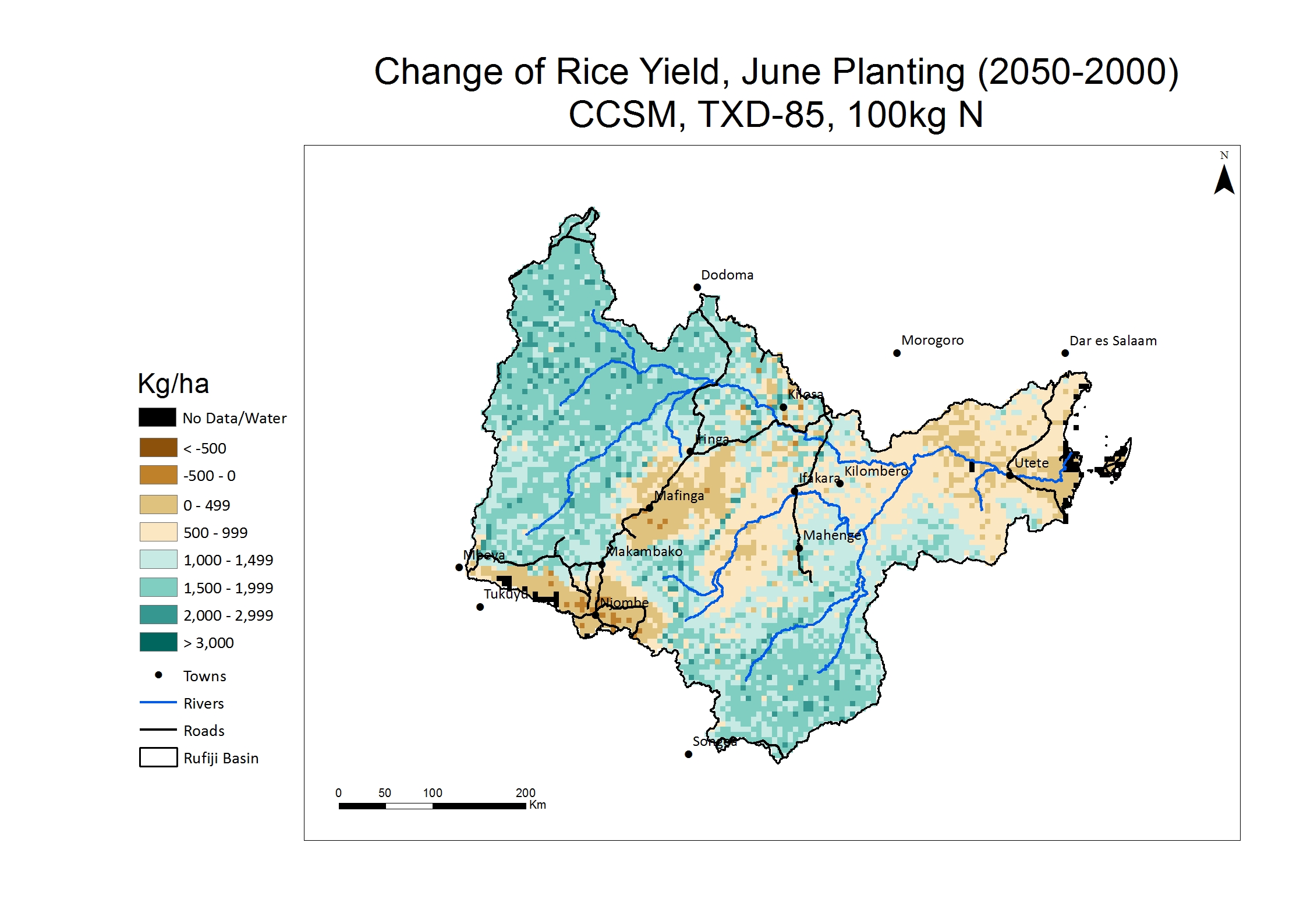Variety Effects
Introduction
An important possible adaptation to climate change effects is to plant newer varieties that may be more resilient to changing temperatures such as during the dry, winter season. A comparison is shown between the yield of Supa, a commonly grown variety that is known for it good taste and aroma, and an improved variety known as TXD-85.
Current
The difference in simulated yield between Supa and TXD-85 is very large, particularly where rice growing conditions are best and if sufficient amounts of fertilizer are applied. In cold or drier areas, neither variety yields well.
Future - 2050
In 2050, the difference in yield between Supa and TXD-85 appears even greater, with TXD-85 yielding high especially in the wettest and warmest areas east of the Highlands. Yields of Supa, on the other hand, remain low.
Change
The change in yield maps confirm that rice yields indeed rise with projected climate change for both varieties. Temperatures warm and become more conducive during the dry, winter season.
However, TXD-85 yields rise more than those of Supa throughout the lowlands. The difference between the two varieties is even larger than during the rainy season, because water is sufficient with irrigation and the improved variety has a higher potential.
In the warmest area of the Basin near the Indian Ocean coast, rice yields do not rise much for either variety due to hot temperatures restricting yield even during the dry winter season.
Comparison
Supa
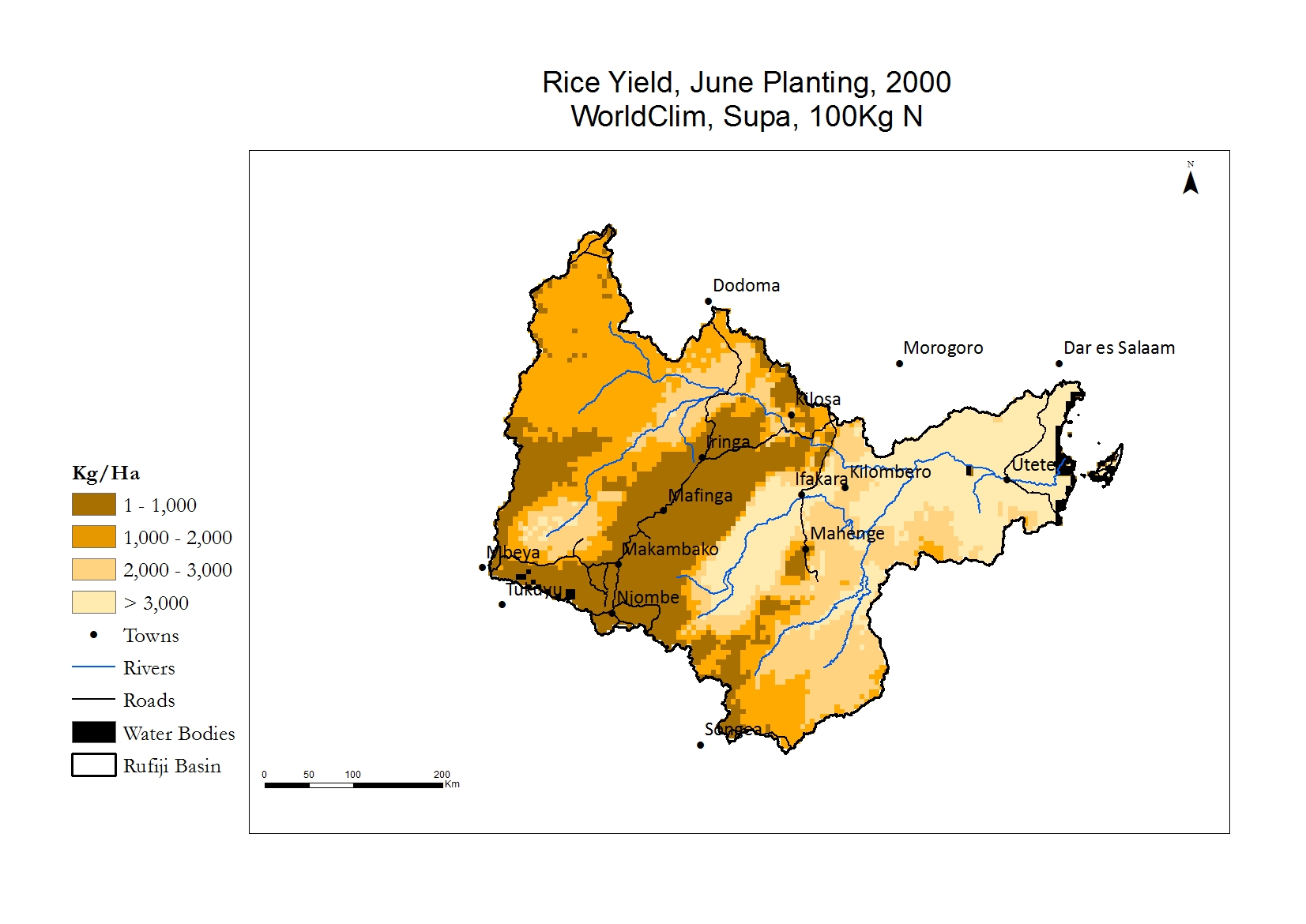 Current
Current
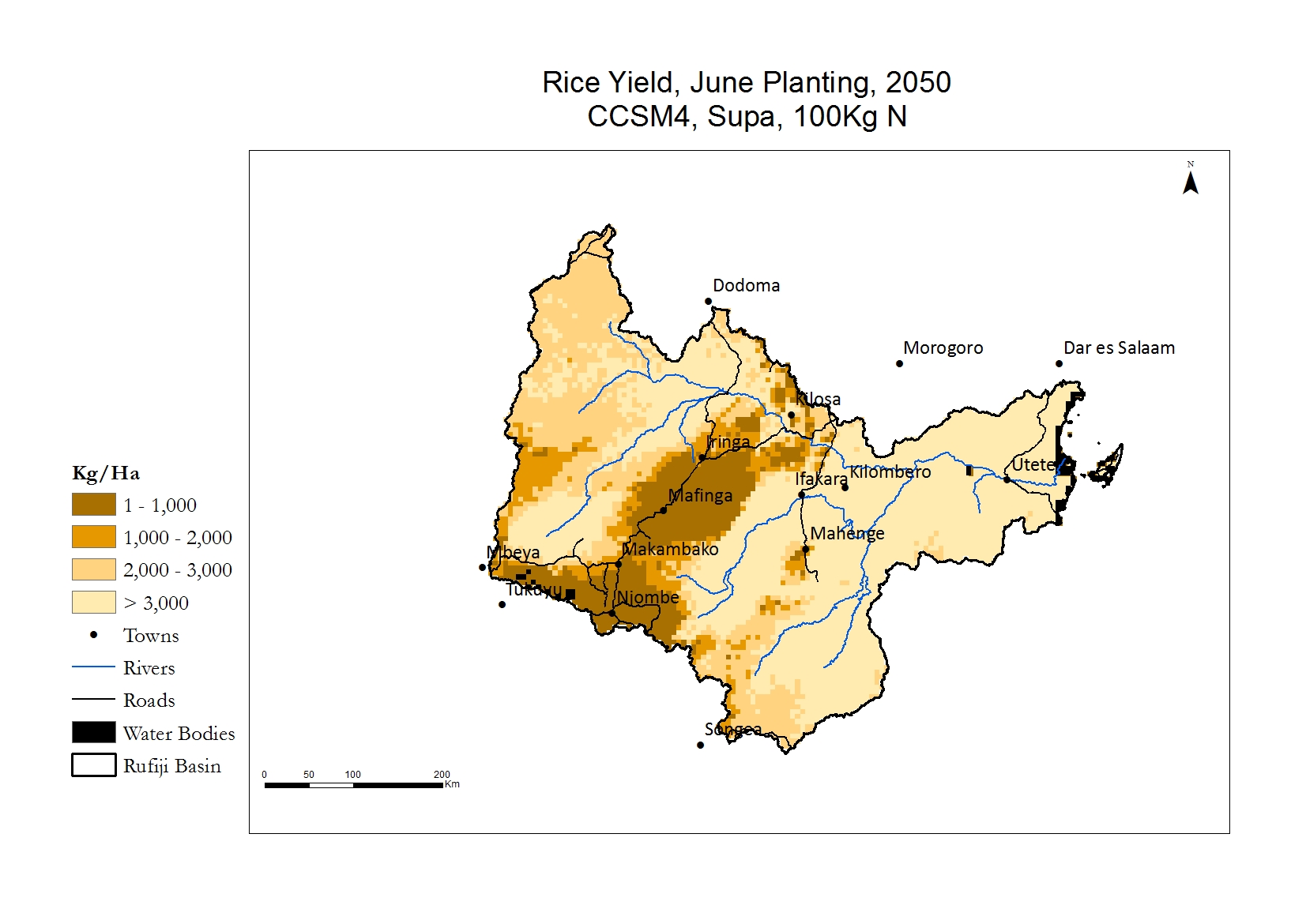
TXD-85
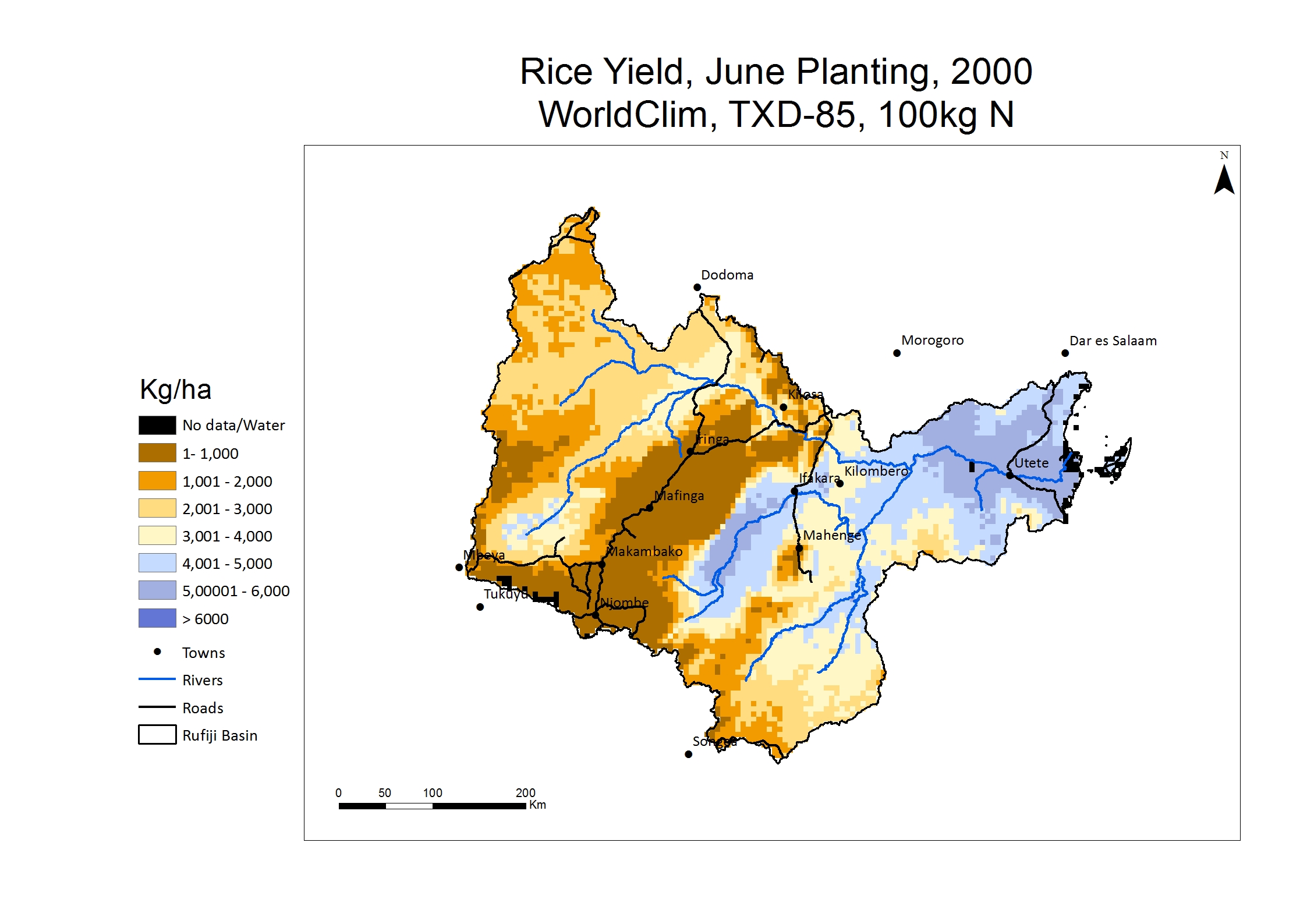 Current
Current
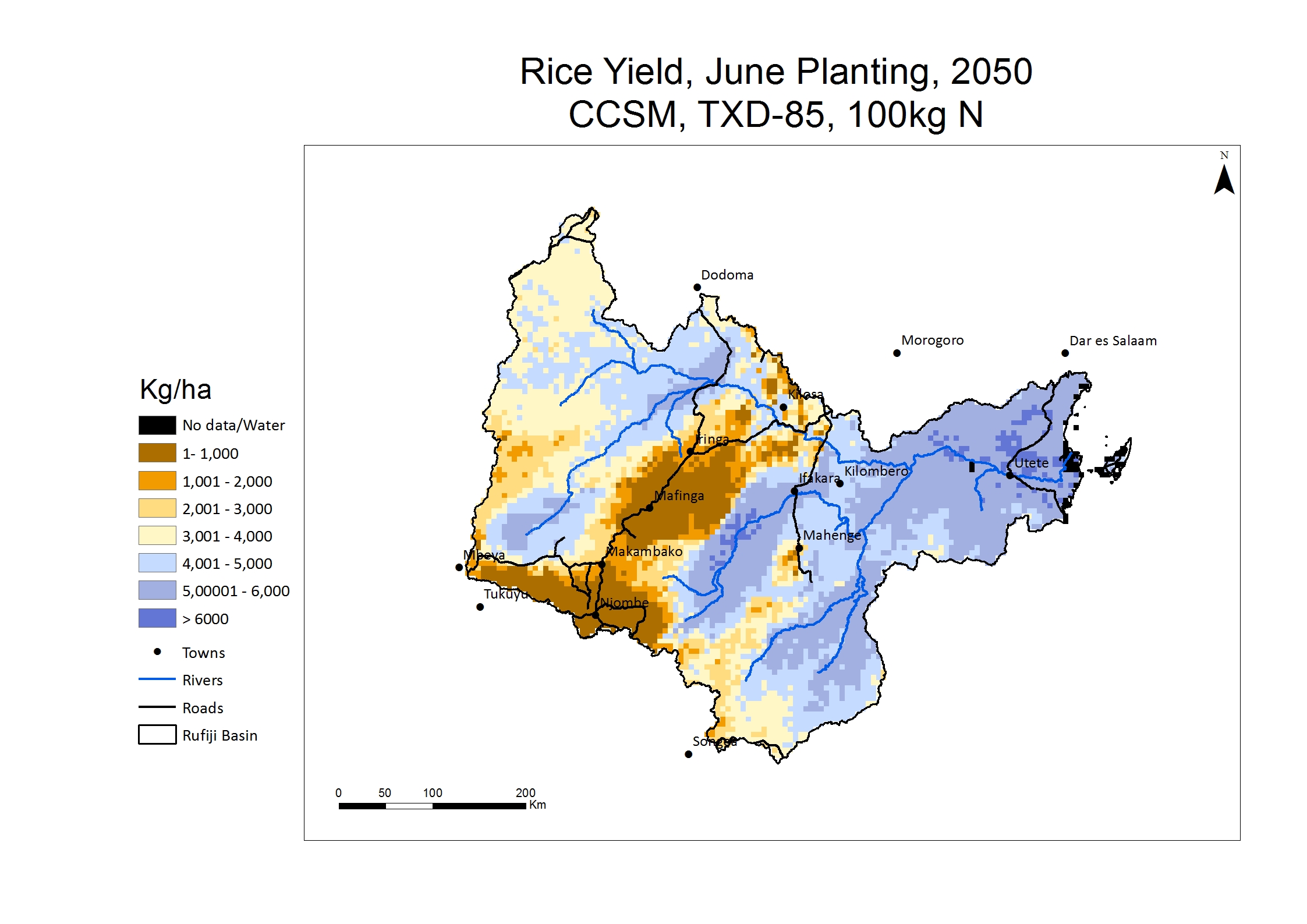
Supa
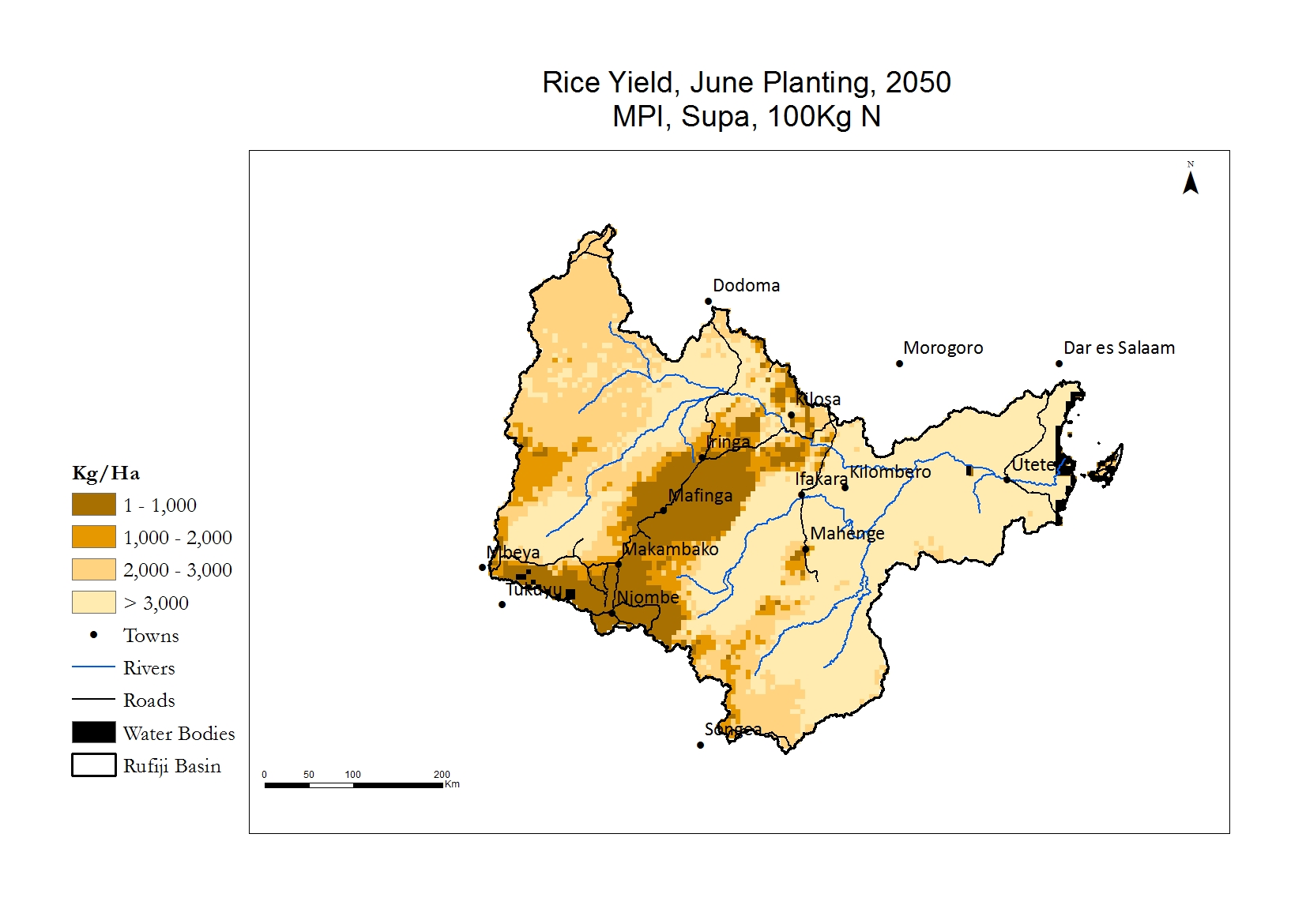 asdfsdf
asdfsdf
 Current
Current
TXD-85
 Current
Current
